Rare and Endangered Pangolin
The pangolin is one of the rarest creatures to see in the bush yet somehow it is poached 82 times more than rhinos and a whopping 1,000 times more than tigers!
A shocking 100,000 pangolins are poached every year. As a result, all eight species of pangolin are endangered, with the IUCN recently upgrading two Asian species to critically endangered. Despite this, their illegal trade is booming. In one particularly disheartening case, 42 pangolins were rescued from poachers in Vietnam and handed over to forest rangers, but instead of returning them to their natural habitat, they were sold to restaurants for over $11,000. While the money has been confiscated, the rangers were never convicted for their crimes—as is often the case in the illegal pangolin trade.
Their expensive meat (a kilogram of which can cost up to $250) is a delicacy and a status symbol in China and Vietnam, with fetus soup sold as an elixir for anything from men worried about their virility to new mothers wanting to breastfeed. Their scales are also heavily sought-after in traditional medicine, with unsubstantiated claims of curing everything from acne to cancer, despite the fact that they are made primarily of keratin—which is the same, chemically-identical protein found in our fingernails, rhino horns and bird talons.
The belief in parts of China that the pangolin has medicinal value is supported by absolutely no scientific evidence. It originates in an ancient belief about the pangolins ability to dig. Their name in Chinese literally means ‘animal that can dig through a hill’, which doesn’t seem like an exaggeration since some can reportedly dig through concrete. However, the ancient myth goes further and suggests that eating this creature should therefore allow people to absorb the strength of the pangolin in breaking through various biological barriers. Needless to say, much like rhino horns and tiger parts, there is no scientific evidence that pangolins have any medicinal benefits.
The pangolin is so unique that taxonomists have given them their own order: Pholidota, of which four species are found in Africa and four in Asia. They are nocturnal, solitary and shy. They have a tongue longer than their body. Some species are able to hang from their tail, while others can dig burrows large enough for you to stand in. The distinctive pangolin also has an endearing way in which they raise their pangopups. Yep, they are really called pangopups. Pangopups are carried on their mother’s tail for the first three months of life. After they get off her tail and start walking, they stick around for a further two years until they reach adulthood, at which point they are old enough to start their own solitary lives
Filmed in the Sabi Sand Nature Reserve, Greater Kruger National Park, South Africa
Filmed in 4K UHD resolution using the Sony AX100 4K video camera: https://go.magik.ly/ml/hory/
Subscribe: https://bit.ly/30a0IRM | Merch: http://teespring.com/stores/robtheranger
Watch the newest videos: https://www.youtube.com/playlist?list=PLLLkJbMHt1booI-NVZ7lZxheEp8UMFRYE
Follow Rob The Ranger:
TWITTER: http://goo.gl/U8IQGf
INSTAGRAM: https://instagram.com/robtheranger
BLOG: http://goo.gl/yJJ3pT
FACEBOOK: http://goo.gl/M8pnJh
OFFICIAL bilibili: https://space.bilibili.com/1427022354
STEEMIT: https://steemit.com/@robtheranger
TUMBLR: http://goo.gl/qF6sNS
Watch more videos!
Lions, Lions, And More Lions: https://www.youtube.com/playlist?list=PLLLkJbMHt1bpPTGnTaR798fdsHNJ7ZNGt
African Elephant (Loxodonta africana): https://.youtube.com/playlist?v=qzINZPv7PMc&list=PLLLkJbMHt1bpUo_KWtwJ3ck3Q1-xfMmkh&playnext=1
African Wild Dogs/Painted Wolves: https://youtube.com/playlist?v=DXQc_v5qjS4&list=PLLLkJbMHt1bocK9_hokQ5Z8tpEOukHJnv&playnext =1
Hippo (Hippopotamus amphibius): [https://youtube.com/playlist?v=nDgIt9QF_IM&list=PLLLkJbMHt1bqhsVIGpg5YgS4-prwujiKq&playnext=1
Most Popular: https://www.youtube.com/playlist?list=PLLLkJbMHt1bpQ4T4enPPMkf_5cK26Vouw
About Rob The Ranger Wildlife Videos:
The purpose of the channel is to show what it is like to experience seeing wild animals on an African safari. Nature Documentaries are often highly edited to tell a story, wildlife safaris are not, and the idea here is to show the wildlife sightings the way they were seen. Safari tours in Africa are generally suitable for all ages and this channel can be considered an educational channel about incredible nature, some scenes in the nature videos may be more graphic than people are used to but this is the reality of nature and is what you would see if you were present on such a safari in person. Safaris in Kenya, South Africa, or any other African country are an unrivalled experience for anyone with a passion for nature, wildlife photography, and travel. Hopefully the animal videos on this channel can provide a glimpse into what the nature experience is like and encourage more people to take a wildlife safari one day. Make sure to subscribe and enable ALL notifications!
-
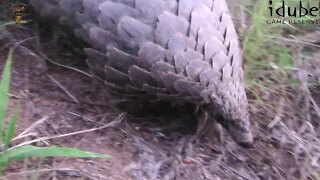 0:44
0:44
Rob The Ranger Wildlife Videos
12 years agoMost Poached Rare Animal: Pangolin!
2111 -
 15:47
15:47
Rob The Ranger Wildlife Videos
7 months agoEpic Pangolin (Scaly Anteater) Sighting! | Rare And Endangered | Lalashe Mara Ripoi Safari
52 -
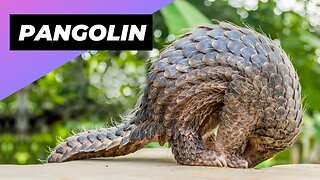 0:55
0:55
1 Minute Animals
1 year agoPangolin 🦔 The Most Trafficked Mammal
4 -
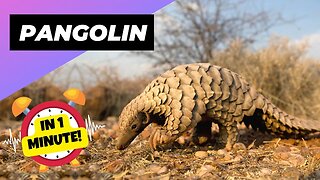 1:13
1:13
1 Minute Animals
1 year agoPangolin - In 1 Minute! 🦔 One Of The Cutest And Exotic Animals In The World | 1 Minute Animals
1 -
 6:15
6:15
Earth Titan
6 years ago10 Incredibly RARE White Versions of Animals
189 -
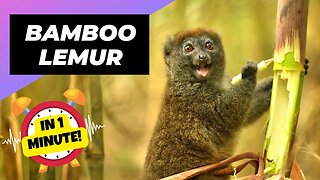 1:05
1:05
1 Minute Animals
1 year agoBamboo Lemur - In 1 Minute! 🐒 One Of The Most Endangered Animals In The Wild | 1MinuteAnimals
4 -
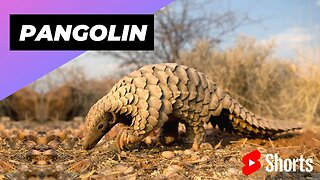 0:55
0:55
1 Minute Animals
1 year agoPangolin 🦔 One Of The Cutest And Most Exotic Animals In The World #shorts
-
 0:55
0:55
1 Minute Animals
8 months agoSumatran Tiger 🐅 The Smallest & Most Endangered Tiger!
6195 -
 10:19
10:19
1 Minute Animals
10 months agoTOP 10 Most ENDANGERED Animals In The World | 1 Minute Animals
3 -
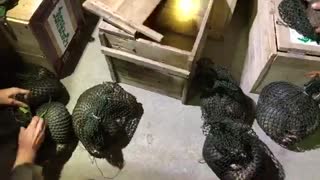 5:09
5:09
savevietnamswildlife
7 years agoHundreds Of Confiscated Pangolins Are Being Rescued By Save Vietnam's Wildlife
402K12